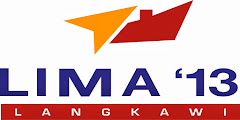15 Maret 2017
HMAS Sirius O-266 (photo : Chosun)
Fleet's support capability gets Sirius boost
The Royal Australian Navy’s replenishment capability is operating at capacity once again with HMAS Sirius back in the brine after four months of maintenance at Captain Cook Graving Dock, Garden Island.
The fleet tanker cut an impressive figure against the city skyline as she sailed out of Sydney Harbour and into the Pacific Ocean for sea trials recently.
She will return to Sydney briefly to take on bulk fuel at Gore Cove before commencing her transit home to Rockingham, Western Australia. It will be the first time a Navy tanker has ‘bunkered’ fuel at Gore Cove since HMAS Westralia did so in 1993.
The crew of 73 are looking forward to the upcoming increase in pace.
“We are excited about getting Sirius back to sea to do our job”, said Ship’s Warrant Officer Dale Young.
“When their ship is high and dry, sailors tend to feel a little high and dry as well, and that is how we have all been feeling about our beloved ship the past four months.
“It has been a trying time but extremely well handled by all onboard. Our repairs have been completed and we are keen to get back to work for Australia.”
Readying a ship and crew to return to sea safely requires hard work and detailed planning.
In the weeks leading up to their departure, the crew of Sirius had honed their fire, flood and toxic hazard procedures and conducted numerous ‘fast cruises’, which are carried out alongside and simulate a number of emergency situations which may occur at sea.
The ‘fast cruise’ is designed to test a ship’s organisation, watch bill proving and management of elementary safety incidents, such as a man over board, while safely tied up alongside.
“They are a great way to test being at sea without actually being at sea,” Warrant Officer Young said.
HMAS Sirius O-266 (photo : GFL)
Sirius also tested its replenishment at sea rigs - which allow her to refuel and replenish other warships at sea while underway - and conducted a basin trial alongside to test the ship’s machinery.
Her readiness will be tested over the next three weeks at sea by a series of ship-run exercises, known as a shakedown, followed by a period of Sea Training Group covered training.
Sea Training Group is Navy’s in-house training and assessment team.
“Despite the hard work ahead of us we can definitely see the light at the end of the tunnel,” Warrant Officer Young said.
“We will spend a few weeks shaking off the cobwebs during the shakedown off the east coast before heading to Melbourne for a port visit. Then the bit everyone has been waiting for, heading west. By the time we return home it will have been six months we have been away from our family and friends in Western Australia.”
The Royal Australian Navy's afloat support capability is provided by the replenishment ships Sirius and HMAS Success.
Sirius can carry more than 34 million litres of fuel, including more than 5 million litres of aviation fuel for use by helicopters embarked in ships at sea.
She can replenish ships at sea by day and night, and is capable of replenishing two ships at a time.
A contract was signed with Spanish shipbuilding company Navantia last year to build Australia’s two replacement replenishment ships, with the first to be delivered by 2019.
(RAN)
Langganan:
Posting Komentar (Atom)












Tidak ada komentar:
Posting Komentar